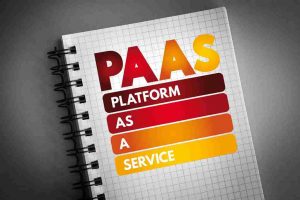The personal information requirement therefore changes, but so does the class at the analysis level, the table in the design level database and the code in the Java class, as can be seen in Fig. If requirements are not traced, a simple change like this may imply the difficult task of analyzing which artifacts of the system are involved. A real software system has a high number of requirements, attributes, relationships, etc., so traceability is critical in order to guarantee consistency in software products. The paper provides a theoretical foundation and describes how the approach was integrated into an existing methodology.
- Although denominated rules, they may comprise any type of algorithms for the creation or checking of traces.
- Kassab, Ormandjieva & Daneva consider the tracing not only of functional requirements but also of non-functional requirements .
- Definitions in QA testing such as horizontal traceability in Dictionary H.
- It is inappropriate to use a material past its expiration date to establish a traceability claim.
- These are represented by the metaclasses TraceRules, Change, Warning and Error (see Fig. 3).
- Especially when certifying safety-critical products it is necessary to demonstrate that all requirements are realized.
Traceability can be horizontal through all the test documentation for a given test level (e.g. system testing, from test conditions through test cases to test scripts) or it can be vertical through the layers of development documentation (e.g. from requirements to components). Testing the test requirements relative to the documentation levels (for example, testing plan, test design specification, test scripting specification and testing procedure specification or automated testing script. Traceability has long been aggressively promoted in the automotive industry. It is widely utilized for preventing recall problems, minimizing damages, and extracting/improving management challenges as well as ensuring quality management.
Sentiment Analysis NLP
At first glance, this would appear to introduce a high degree of complexity, but that is not the case. Source and target metamodels define the relationship between concepts and need to be modelled only once. In the same way, model transformations are only defined once, unless the metamodel changes. Indicators or metrics are required to measure ROI—a key factor in industry, and especially in the use of trace models. It helps to illustrate the importance of the traceability management. This image presents an example to illustrate the traceability of a storage requirement in the analysis and design phase.
Requirements management tools also enable requirement coverage metrics to be calculated easily as traceability enables test cases to be mapped to requirement. Off course, there are many advanced systems to manage requirements, such as for example, Jira , solutions provided by Microsoft company, or the Enterprise Architect program, to name just the few. These tools allow to create and manage relations https://www.globalcloudteam.com/ between the requirements in a convenient and effective way. An additional advantage arising from requirements tracing of this type, is that it facilitates the search for inconsistencies and allows easier identification of potential gaps. We may, for example, realize that a certain higher level requirement (e.g., business requirement) does not have any related lower level requirements.
Tracing towards and beyond the requirements
All meanings are written according to their generally accepted international interpretation. For convenience, you can use the search bar to simplify and speed up the search process. No, laboratory accreditation, whether conducted by NIST/NVLAP or any other recognized accreditation body, is a finding of a laboratory’s competence and capability to provide technically sound and appropriate measurement services within their scope of accreditation. Embedded in the process is an evaluation of the lab’s ability to achieve and maintain traceability for the accredited services. An internal measurement assurance program may be very simple or rather complex, the level or rigor to be determined depending on the level of uncertainty at issue and what is needed to demonstrate its credibility.
Companies that choose a best-of-breed approach solve the traceability challenge with requirements management tools that provide a complete traceability model and integrations for the best of breed tools. A single ALM tool to cover requirements, risk analysis, system design, task management, code repositories, integration, testing and more is a classic trade-off between best-of-breed capabilities vs. a more limited feature, common platform. The purchase and use of an SRM does not automatically make the customer’s measurement results traceable to reference standards developed and maintained by NIST. The intended purpose of most NIST certified reference materials, including SRMs, is to provide higher-order calibration and validation materials to secondary standard producers and customers intending to produce metrologically traceable in-house calibrants and control materials . However, NIST SRMs are only one of the elements that enable a claim of traceability for a measurement result.
How to Use and Train a Natural Language Understanding Model
An ordinal property is a quality whose values may be ordered in a substantively meaningful way, but for which neither arithmetic differences nor ratios are meaningful, even when the values are expressed using numbers. For example, the Mohs hardness of a mineral , or the strength of a hurricane according to the Saffir-Simpson Hurricane Wind Scale. The second standard needed for counting finitely many entities is the unique subset of the consecutive positive integers including 1 and its successors, in the sense of Peano’s axioms that can be put into one-to-one correspondence with the elements of the set whose elements are being counted. If no such subset of the positive integers exists, then we say that the count is 0. The property intended to be measured may be qualitative , or quantitative (for example, the mass concentration of 25-hydroxyvitamin D3 in NIST SRM 972a, Level 1, whose certified value is 28.8 ng mL-1). The measurand may also be an ordinal property , or a function whose values may be quantitative or qualitative .

Since the 1990s, the advantages and problems of traceability have been discussed in several academic works, including the surveys of Gotel & Finkelstein and Winkler & Pilgrim and the articles of Haouam & Meslati and Charrada et al. . The first, a cornerstone paper in requirements traceability research, identified the main problems of requirements specification. The second highlighted the gap between industrial needs for traceability integrated within the development process and existing academic proposals.
Traceability Tools
Explore the possibility to hire a dedicated R&D team that helps your company to scale product development. Management and utilization of the manufacturing history and inspection results of these parts by the plant can also be regarded as internal traceability. This provides manufacturers with the benefit of easier cause investigation and product recall when unexpected problems occur with their products. Consumers can also use this as a benchmark to select highly reliable products, without worries such as mislabeling.

These relationships were used to implement the design basis for the ContextModel and the TraceModel (see Fig. 3). Architecture Model, which made it possible to represent the software architecture—that is to say, the relationships between software components coded in different programming languages—and, more specifically, to model the model-view-controller pattern. Micro services and event-driven patterns will be considered in future versions. In this section, the proposed traceability management method is validated using Navigation Development Techniques . As mentioned in “Applying the MDE-Based Traceability Approach”, however, it can also be applied in other model-driven approaches like UML-based Web Engineering (Koch & Kozuruba, 2012), MockupDD (Rivero & Rossi, 2013) and Web Modeling Language (Brambilla & Fraternali, 2014). Each context model consists of a set of traceable elements, while a tracing model is the set of trace links.
What means horizontal traceability for testers.
When the developer creates the UIStep “Creation Anamnesis” and executes the transformation to generate test cases, the plug-in NDT-Driver asks NDT-Quality if the corresponding activity diagram is consistent and conforms to the relevant methodological principles. If it is OK, the TestUIStep “Creation Anamnesis” is created, together with https://www.globalcloudteam.com/glossary/horizontal-traceability/ a TraceLink object that stores this relationship (denominated StepTL in Fig. 7). The same process is performed several times, depending on the loops and decisions for each activity in the activity diagram. With this in mind, the following sequence diagram shows how the tools interact to generate these relationships (see Fig. 10).

The Standard Reference Data Program augments this system by providing scientists, engineers, and the general public with access to critically evaluated data necessary to perform state-of-the-art research and development. Claiming that counts are traceable to the SI is too much of a simplification because it neglects the fact that counting inextricably involves the definition of what is being counted, and the standard that underlies this definition is not part of the SI. NIST does not approve, recommend, or endorse any product or proprietary material. The results shall not be used to indicate or imply that they are applicable to other similar items, in particular in commercial advertisements.
Definition horizontal traceability
This means staying reasonable and not trying to relate each requirement with every other one, just for the sake of it. Admittedly, it may seem sometimes that one requirement impacts almost all others but also the other way around, almost all requirements may seem to impact this particular one. The mutual dependencies of related requirements should be clear, understandable and transparent to the recipient. In one of my previous posts, I’ve described the classification of requirements and their hierarchy. The hierarchy itself, along with creating links between higher level requirements and their lower level counterparts allow to trace the way how the higher level ones were decomposed.
